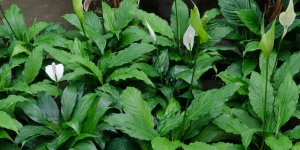Excess humidity in homes can cause discomfort and damage to furniture. One of the most effective ways to manage indoor humidity is with the help of plants that thrive in humidity and absorb it. Having plants in your home will help you breathe better and make you feel happier. Eight indoor plants can help you keep excess humidity at bay.
.
1. Areca Palm
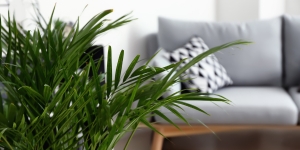
The Areca Palm, also known as the butterfly palm, is a popular indoor plant due to its lush, feathery fronds. Native to Madagascar, this plant thrives in humid conditions, perfect for absorbing excess moisture from the air. Areca Palms are relatively low-maintenance and can grow tall, adding a touch of the tropics to your home. Place them in bright, indirect light and water them regularly to keep the soil moist but not soggy.
Care Tips
- Light: Bright, indirect sunlight.
- Water: Keep the soil consistently moist, but avoid waterlogging.
- Humidity: Thrives in high humidity but can also help reduce excess moisture in the air.
.
2. Rubber Plant
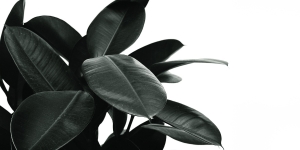
The Rubber Plant is a striking addition to any room with its broad, glossy leaves and a powerful ally in controlling indoor humidity. This plant is known for absorbing toxins and excess moisture from the air, improving the overall air quality in your home. Rubber Plants prefer bright, indirect light and should be watered when the top inch of soil feels dry.
Care Tips
- Light: Bright, indirect sunlight.
- Water: Allow the top inch of soil to dry out between waterings.
- Humidity: Prefers moderate to high humidity, ideal for humid environments.
.
3. Fiddle Leaf Fig
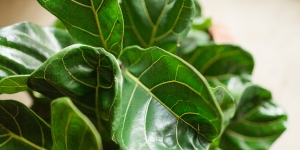
The Fiddle Leaf Fig is a favourite among interior designers for its large, violin-shaped leaves that make a bold statement in any room. Besides its aesthetic appeal, this plant absorbs excess humidity, making it stylish and functional. Place it in a bright spot with indirect light and water it when the top inch of soil is dry.
Care Tips
- Light: Bright, indirect sunlight.
- Water: Water when the top inch of soil is dry.
- Humidity: Enjoys high humidity and helps reduce excess moisture.
.
4. Monstera Deliciosa
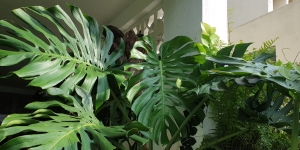
The Monstera Deliciosa, often called the Swiss cheese plant due to its distinctive leaf holes, is trendy and helpful in managing indoor humidity. This plant loves humidity and will help balance moisture levels in your home. It prefers bright, indirect light and should be watered when the top inch of soil feels dry.
Care Tips
- Light: Bright, indirect sunlight.
- Water: Water when the top inch of soil is dry.
- Humidity: Thrives in high humidity, making it perfect for humid environments.
.
5. Money Plant
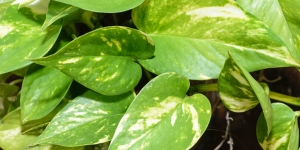
The Money Plant, also known as Pothos or Devil’s Ivy, is a versatile and easy-to-care-for plant that can thrive in various indoor conditions. Known for its air-purifying properties, it also helps absorb excess moisture from the air. This plant can be placed in bright, indirect light but can also tolerate low-light conditions, making it ideal for any room in your home.
Care Tips
- Light: Bright, indirect sunlight or low light.
- Water: Water when the top inch of soil is dry.
- Humidity: Tolerates a range of humidity levels but helps reduce excess moisture.
.
6. Lucky Bamboo
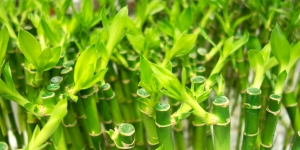
Lucky Bamboo is a popular plant in Feng Shui for bringing good luck and positive energy into a home. It can also help manage indoor humidity. Lucky bamboo grows well in water-filled containers, which allows it to absorb moisture directly from the environment. It prefers indirect light and should be kept in clean, fresh water.
Care Tips
- Light: Indirect sunlight.
- Water: Keep the roots submerged in clean, fresh water.
- Humidity: Naturally helps in controlling humidity.
.
7. Chamaedorea
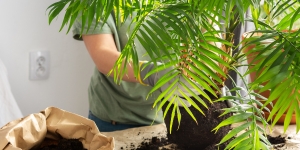
Chamaedorea, or Parlor Palm, is a compact plant for small spaces. Its ability to thrive in low light and high humidity conditions makes it an excellent choice for absorbing excess moisture from the air. This plant prefers indirect light and should be watered when the top inch of soil feels dry.
Care Tips
- Light: Low to bright, indirect sunlight.
- Water: Water when the top inch of soil is dry.
- Humidity: Thrives in high humidity, making it great for humid areas.
.
8. Peace Lily
The Peace Lily is a beautiful plant with its white, sail-like flowers. It is also a powerful air purifier and humidity regulator, helping to absorb excess moisture from the air. Peace Lilies prefer low to medium light and should be watered when the top inch of soil feels dry.
Care Tips
- Light: Low to medium, indirect sunlight.
- Water: Water when the top inch of soil is dry.
- Humidity: Prefers high humidity but helps regulate moisture levels.
.
Conclusion
Incorporating these eight indoor plants into your home can significantly help manage excess humidity while adding beauty and life to your space. Each plant has unique care requirements, but with a bit of attention, they can thrive and assist in creating a more comfortable living environment. So, whether you’re a seasoned gardener or just starting, these plants are excellent choices for keeping your home’s humidity in check.



